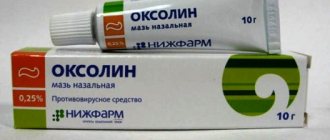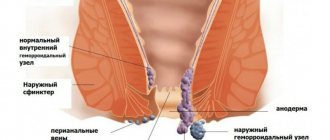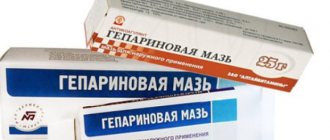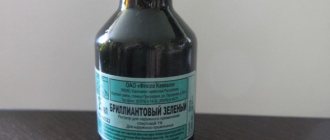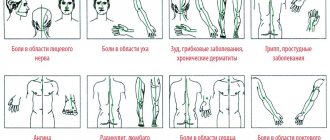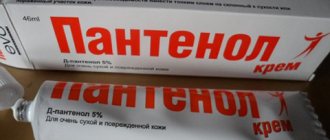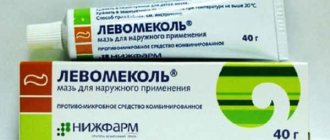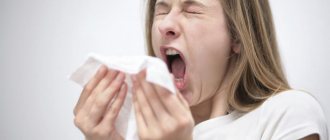With age, wrinkles appear on a person's skin. Their occurrence occurs due to the skin losing its elasticity and its elastic properties, as well as due to excessive activity of facial wrinkles. Every woman devotes a lot of time to fighting wrinkles. And this is quite natural, because everyone wants to stay young as long as possible.
Currently, the cosmetology industry offers a large selection of products - creams, lotions and gels , the use of which reduces wrinkles on the skin of the face and neck. However, not all of them can restore skin that is in a fading state. For this reason, many people opt for medications that contain highly effective components. Many people choose retinoic ointment, which effectively fights wrinkles.
Description, composition and packaging
A person who has just learned about this anti-wrinkle product will, of course, be interested in the question of whether this composition is effective in the fight against wrinkles. Based on the reviews of doctors, they indicate that this ointment can help solve not only this problem, but also cope with many other problems. However, most often women use this product to smooth out wrinkles on the skin.
In this ointment, the substance isotretinoin is the main active compound. In addition to it, the composition contains the following components:
- emulsion wax;
- dibunol;
- glycerol;
- Vaseline oil;
- purified water;
- ethanol.
In tubes made of aluminum, the ointment goes on sale in pharmacy chains. The cardboard packaging hides the tube of this effective ointment.
Features of the drug
Doctors say that this remedy is quite effective in fighting wrinkles. They also note that this remedy can also be used to eliminate acne . This remedy is very popular among women. It is chosen by those representatives of the fair sex who want to breathe life into their fading skin and improve its condition. However, you need to know that the experience of using this medication over a long period of time has revealed another beneficial effect of this ointment. Quite often, retinoic ointment is used to eliminate wrinkles.
Pharmacology
This remedy has keratolytic and dermatoprotective effects, and in addition, when used, it has an antiseborrheic and anti-inflammatory effect. Retinoic acid is vitamin A in its active form. Many people know that it is she who takes part in the processes of regulation of cell differentiation . The instructions for this ointment indicate that when used, this product allows you to quickly eliminate acne that has appeared on the skin of the face.
In the process of using this product, terminal differentiation of cells occurs, as a result of which the processes of detritus formation are hampered, and the hyperproliferation of the epithelium is also slowed down. Thanks to this effect, it is possible to reduce the production of sebum, which ultimately leads to normalization of the skin condition. Moreover, when using this medication, inflammation around the sebaceous glands is significantly reduced.
Side effects
Uncontrolled use of the drug leads to disastrous consequences; it is the same as drinking handfuls of drugs without a significant reason. Experts observe such manifestations as:
- Increased headaches;
- Increased pressure inside the skull;
- Depression and nausea;
- Increased nosebleeds;
- Anemia and general changes in blood counts;
- Increased sweating and photosensitivity;
- Dermatitis, dry skin and flaking;
- Muscle pain.
Therefore, even for cosmetic purposes, the drug should be used with caution. Follow all the rules specified in the instructions, and most importantly, do not exceed the time limit allotted for the procedure.
Properties of retinoic ointment
Cosmetologists, speaking about the use of this ointment, claim that there have been cases when the use of this product in the fight against wrinkles was unsuccessful. If the components contained in the ointment come into contact with the skin for a long time, then redness may occur and the peeling process may begin .
If the ointment is applied to the skin of the face for a short time, and all the recommendations of the attending physician are fully followed, then in this case the medicine stimulates blood circulation and enhances the production of collagen. Note that it is the deficiency of this substance that leads to the formation of wrinkles at an early age. Thus, it can be stated that the use of this drug makes it possible to smooth out small folds that have not yet taken root on the skin of the face.
However, in order to achieve a better therapeutic effect, it is necessary to practice treatment with this drug for a short time. Experts recommend twice a year . The first course of treatment should be carried out in the spring, and the second should be carried out with the onset of autumn. Moreover, in case of prolonged use of the ointment, the duration of the course of treatment should not exceed 4 weeks.
The effect of vitamin A on wrinkles
Customers who have already tried this product claim that when it is used, facial wrinkles are smoothed out, and age-related folds that have appeared on the face and neck are eliminated.
Many people are well aware that the aging process of human skin begins after puberty. It is accompanied by a gradual decrease in the number of collagen fibers, as well as the level of moisture in the skin. All this gradually leads to a decrease in the elasticity of the facial skin. When a person reaches 40 years of age, there is a significant decline in collagen . It becomes one third less.
In order to smooth out wrinkles, remove acne, and restore aging facial skin, many people use products with vitamin A. This component is the main one in the composition of retinoic ointment intended to eliminate wrinkles. Doctors say that many women who have experienced early wrinkles have already tried retinoic ointment.
What happens after using this ointment? When the product is applied to the skin, the proliferation process is regulated. In other words, active cell division occurs to form new ones. Experts also note that when using this medication, intercellular communications are activated . This is ensured by the substances contained in retinoic ointment. It is due to them that the pigmentation process is regulated, and in addition to this, the sebaceous glands return to normal.
Indications
The presence of acne and pimples on the skin is the main indication for the use of this ointment. However, as stated above, this problem is far from the only one that can be dealt with using this tool. This ointment can also be used for aging skin, that is, after 30-40 years . Also, a girl at a young age can also use this ointment if there are a large number of facial folds on the skin. In addition, the medication can be prescribed for seborrhea, rosacea, and perioral dermatitis.
Mode of application
How should I use retinoic ointment? To smooth out wrinkles, the drug in question is applied in exactly the same way as a night cream. However, before carrying out this procedure, the skin should first be cleaned.
Apply a light layer of ointment over the face, excluding the areas around the eyes.
At the very beginning of therapy, the drug should be used with two-day breaks. If no side effects are observed, then switch to daily use of the medication.
Instructions for retinoic ointment
This wrinkle smoothing ointment must be applied like a night cream . However, before applying the composition, it is necessary to carry out a skin cleansing procedure. The ointment is applied in a thin layer, excluding the skin around the eyes. At the beginning of therapy, this medication must be used with a two-day break. If a person does not feel any side effects, then in this case it is possible to switch to daily use of this composition.
Tips for using retinoic ointment
This drug is not recommended for use without medical supervision. This recommendation is due to the fact that retinoic ointment is a medicine and is not a purely cosmetic product. The danger of using this composition is that the effect of retinoids on the skin has not yet been fully studied. When carrying out therapy with this ointment, it is necessary to use sunscreen.
In addition, during the period of use of the medication, you should avoid using cosmetics that have exfoliating and exfoliating effects. In other words, the use of scrubs and lotions that contain alcohol in daily skin care should be excluded.
In order to prevent the occurrence of photosensitivity, this medication must be applied immediately before bedtime. It is optimal to do this at 9-10 pm . In this case, the skin will receive deep nutrition. If the patient’s body reacts negatively to the ointment used, then in this case the use of the product should be stopped and consult a doctor for advice.
Side effects
the following side effects when using this ointment to combat wrinkles and acne
- the appearance of headache;
- decreased night vision, conjunctivitis and anemia;
- dermatitis, dry mucous membranes and sweating;
- the occurrence of pain in the muscles;
- weakening of hearing and fear of light;
- nausea;
- the appearance of nosebleeds;
- When using this remedy, some patients may experience thinning hair, vasculitis, photosensitivity and depression.
Pharmaceutical research and production enterprise
Drugs from the retinoid group are currently the most effective treatments for all forms of acne.
Why do we choose them?
Because they have a beneficial effect on all processes occurring in the skin when acne occurs - they reduce the production of sebum and facilitate its secretion, normalize keratinization, reduce inflammation, and prevent the growth of pathogenic microbes in the pilosebaceous follicles.
Systemic (internal) retinoid therapy
(Roaccutane or high doses of retinol palmitate) is usually used for severe forms of acne. For mild forms, it is more advisable to prescribe external agents with 13-cis-retinoic acid (isotretinoin). The domestic drug Retinoic ointment is available in two concentrations - 0.1% and 0.05%, which corresponds to the content of 13-cis-retinoic acid (isotretinoin). The ointment is made on an emulsion basis (that is, it has the consistency of a light moisturizing cream), has a yellowish color, is odorless, is easily applied to the skin and absorbed. What concentration to choose, what guidelines to use in order to maximize the clinical effect? This article is devoted to these issues.
A study of the safety of retinoic ointment at all three concentrations showed that the ointment does not have an allergenic, carcinogenic, mutagenic, embryotoxic or teratogenic effect.
At the beginning of the treatment of papulopustular and comedonal acne, use Retinoic ointment 0.1% to achieve maximum effect in a shorter time. The exception is people with thin, sensitive skin (mainly blondes, red-haired people and children), who initially use an ointment of a lower concentration (0.05%), increasing it if it is well tolerated, usually after 2-3 weeks. The ointment is applied twice a day in a thin layer to the affected areas (facial skin, if necessary, back and chest). When using a high concentration ointment on the face, do not apply it to the eyelids, area around the eyes, lips, corners of the mouth and at the entrance to the nose, and also avoid getting the drug on the mucous membranes to avoid irritation.
Almost all patients on the 5-8th days of treatment experience an exacerbation reaction, manifested in an increase in the number of rashes, moderate redness and peeling of the skin, sometimes dry lips, itching. The reaction lasts from 3 days to 2 weeks, does not require additional therapy and disappears on its own, giving way to persistent improvement. In case of a pronounced exacerbation reaction, stop using the ointment for several days until it subsides. Despite the fact that the instructions for use of the ointment mention the possibility of such a reaction, it is better to warn the patient about it. Our experience shows that it is sometimes regarded by patients as intolerance to the drug and treatment is stopped. It is better to schedule your next visit to a dermatologist 10-14 days after the start of treatment; it is at this time that patients have questions and doubts, they need support and confidence that everything is going as it should. After the exacerbation reaction subsides, improvement is noted - the oiliness of the skin gradually decreases, and resolution of the rash is observed. This favorable trend continues throughout the treatment period (usually 3 months), which does not exclude the appearance of a small number of new eruptive elements. There are usually no other side effects.
The best result is achieved with comedonal acne - cleansing of comedones and reducing skin oiliness occurs within 14-21 days. Deeply located closed comedones become more superficial. With papulopustular acne, pustules (pustules) and comedones resolve first, followed by inflammatory elements; spots, cystic elements and scars are the most resistant to treatment.
To increase the concentration of the ointment in those patients for whom it was considered more appropriate to start treatment with retinoic ointment 0.05%, it is better to choose a period when 7-10 days have passed after the exacerbation reaction has subsided.
What is considered drug intolerance? How to distinguish it from an exacerbation reaction and choose the right tactics for managing the patient?
In some cases, after the first application of the ointment to the skin, the patient is bothered by a burning sensation, itching, and redness occurs. With repeated applications, these phenomena are repeated and intensified, the erythema spreads to neighboring areas, swelling of the skin occurs, redness, rashes in the form of small spots and nodules, and peeling occur. If intolerance occurs, the drug is discontinued, further treatment is carried out with drugs from other groups (not from the retinoid group!). The tactics for treating intolerance phenomena correspond to those of allergic rashes. Intolerance differs from an exacerbation reaction in the timing of its onset, the rapid development of symptoms, the presence of swelling and induration, the appearance of rashes unusual for acne that are not confined to the mouths of the pilosebaceous follicles, and the spread of rashes beyond the application of the ointment.
It should be noted that an initial burning sensation that goes away after a few seconds can be observed in people with sensitive skin if the drug is well tolerated. It is due to the presence in the ointment of a small amount of alcohol used as an antimicrobial substance.
During treatment with retinoic ointment 0.1%, another phenomenon may occur - an overdose of 13-cis-retinoic acid. Clinical manifestations of its excessive accumulation in the skin are the appearance of flaky red spots both in the places where the ointment was applied and nearby (on the neck, abdomen, shoulders, forearms, hands). Subjectively, mild itching and a feeling of increased sensitivity of the skin in places of contact with clothing, as well as when touched, are noted. In such cases, there are 2 options - stop using the ointment until these phenomena resolve, and then start using it again at a lower concentration, or immediately reduce the concentration. An overdose occurs closer to the end of the course of therapy - in the second or third month of treatment.
The use of retinoic ointment 0.05% is indicated in the following cases:
- For thin, sensitive skin prone to irritation;
- In case of excessive accumulation of retinoic acid in the skin (overdose);
- In conditions of increased solar radiation;
- As a transition period to maintenance therapy;
- For conglobate acne in the period between courses of systemic therapy.
The first two cases have already been discussed above.
Trips to southern resorts, moving to a climate zone with a hotter climate, as well as the summer period in the middle zone, are associated with increased insolation. Retinoic ointment increases skin sensitivity to sunlight. In this regard, it is better to use a lower concentration of ointment, switch to a single (at night) application of the ointment, and also use sunscreen when going out in the sun.
How to combine the use of retinoic ointment and sunscreen? Studies have shown that within 1 hour after applying retinoic ointment, its concentration in the skin reaches its maximum level. Based on this, it is recommended to apply sunscreen an hour after retinoic ointment. If too much ointment has been applied, then the excess remains on the skin, giving it an untidy, greasy appearance. In this case, before applying sunscreen, the skin can be treated with tonic, lotion, and wiped with a damp or dry cloth. The recommended level of protection is 30-40 SPF, while on the beach and for persons with sensitive thin white skin and blond or red hair - up to 60 SPF.
Upon successful completion of the main course of treatment (3 months) with retinoic ointment 0.1%, it is necessary to smoothly transition to maintenance therapy. During the transition period (1-2 months), it is recommended to use retinoic ointment 0.05% initially 2 times a day, then once at night.
After completing a course of systemic therapy with retinoids (roaccutane or retinol palmitate) for conglobate acne, the use of local retinoid therapy is also indicated - retinoic ointment 0.1% or 0.05%, depending on the condition of the skin.
Conclusion
Retinoic ointment
- a good external treatment for mild forms of acne vulgaris. The presence of two concentrations of the ointment makes it possible to make treatment more effective, provide maintenance therapy, quickly respond to skin changes by changing the concentration, and avoid overdose without losing the therapeutic effect of the drug.
prof.
IN AND. Albanova Print
Analogues and cost of the drug
People who could not find this remedy in the pharmacy will, of course, be interested in the question: are there any analogues for it. It should be said that this drug has few substitutes. Experts say that retinoic ointment is similar to products actively used in cosmetology, such as:
- Roaccutane;
- Dermoretin;
- Isotretinoin;
- Retasol.
recommend Retin A, Videstim and others to their patients to combat skin folds .
Tips for use
This drug should not be used without medical supervision. This is due to the fact that retinoic ointment is a medicine and not a cosmetic product. The danger is that the topical effects of retinoids on the skin have not been fully studied.
During therapy with this drug, you should always use sunscreen. Also, while using the ointment, you must avoid cosmetics that have a drying and exfoliating effect (that is, you should not use scrubs and alcohol-containing lotions).
In order to exclude photosensitivity, the medication in question is applied immediately before bedtime (for example, at 9-10 pm). Such procedures will contribute to deeper skin nutrition.
If the patient's body reacts abnormally to the ointment, it should be discarded and consult a doctor.
Retinoic ointment for wrinkles: reviews
Doctors in their reviews of this drug indicate that this drug is the most effective among all those presented in the pharmacy chain. When used, acne is eliminated, and in addition, this drug allows you to effectively combat problems that have arisen on the skin. Consumers also express absolute agreement with the opinion of experts.
However, it should be noted that most people do not use this drug as prescribed by a doctor. Although the main effect of using this ointment is to eliminate acne , girls and women also use it to smooth out early wrinkles. Note that this tool copes very well with this problem.
Consumers who have already had the opportunity to use the drug claim that if the anti-wrinkle ointment is used according to all the rules, then this problem disappears, and, in addition, the skin becomes elastic and firm. Patients who have used this ointment express concern that this medication cannot be used during pregnancy, as well as during pregnancy planning.
Contraindications
Retinol ointment is a medicine. The drug is sold in pharmacies and, of course, has contraindications. Experts do not recommend using ointment if you have:
- Hyperlipidemia.
- Individual intolerance to certain components of the drug.
- Hypervitaminosis A.
- Liver failure.
The drug is also prohibited for pregnant and lactating women.

